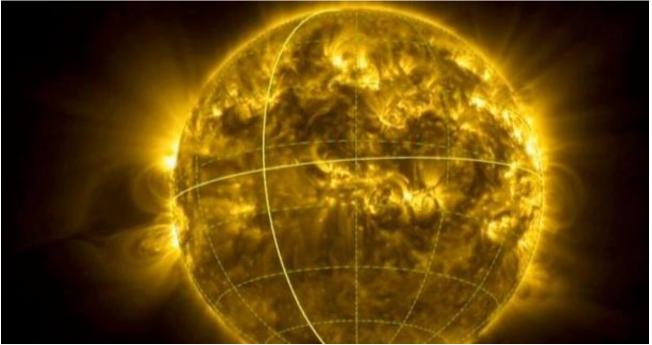Sun’s South pole captured in new space images

These new observations are expected to improve understanding of solar activity and its impact on satellite systems and power infrastructure on Earth.
The European Space Agency's Solar Orbiter spacecraft has sent back the first-ever video and images of the Sun’s south pole, offering scientists an unprecedented look at how the star cycles between violent storms and quiet periods.
These new observations are expected to improve understanding of solar activity and its impact on satellite systems and power infrastructure on Earth.
The footage shows a bright, shimmering atmosphere with temperatures reaching one million degrees Celsius. Within it are cooler, darker gas clouds that still burn at about one hundred thousand degrees.
The images are the closest and most detailed ever captured of the Sun.
“Today we reveal humankind's first-ever views of the Sun's pole,” said ESA Director of Science Prof Carole Mundell.
“The Sun is our nearest star, giver of life and potential disruptor of modern space and ground power systems, so it is imperative that we understand how it works and learn to predict its behaviour.”
Seen from Earth, the Sun looks like a smooth disc due to its brightness. But through special filters and at different frequencies, it becomes clear that the Sun is a fluid, dynamic ball with twisting magnetic fields that create solar flares and loops of gas.
These magnetic fields control when the Sun becomes active and emits particles toward Earth.
The Sun enters a quiet phase when the magnetic fields are stable, with a fixed north and south pole. During this time, explosive activity is minimal.
But roughly every 11 years, the poles flip, and the magnetic fields grow chaotic, often resulting in violent solar outbursts.
These solar storms can damage satellites and power systems on Earth. They can also produce auroras — natural light displays in the sky. Until now, scientists have struggled to predict this activity due to a lack of data on how the Sun's magnetic fields move toward the poles.
“We now have the missing piece of the puzzle,” said Prof Lucie Green of University College London.
“The reversal of the polar magnetic fields on the Sun has been one of the big open questions in science and what we will be able to do with Solar Orbiter is measure for the first time the really important fluid flows that grab pieces of the magnetic field across the Sun and transport them to the polar regions.”
The long-term goal is to build computer models that can forecast this so-called space weather. This will help satellite operators, energy companies, and aurora watchers better prepare for strong solar storms.
“This is the Holy Grail of solar physics,” said Prof Christopher Owen, an expert in solar wind studies.
“Solar Orbiter will enable us to get to the bottom of some of the basic science of space weather. But a little more work needs to be done before we get to the point where we see signals on the Sun that we can rely on to predict eruptions that might hit the Earth.”
Solar Orbiter has also captured detailed images showing the behaviour of chemical elements in different layers of the Sun.
Using an instrument called SPICE, scientists tracked the movement of elements such as hydrogen, carbon, oxygen, neon, and magnesium by measuring the specific light frequencies they emit at known temperatures.
For the first time, the team has followed these spectral lines to determine how fast clumps of solar material are moving, offering new insights into the Sun’s structure and behaviour.
